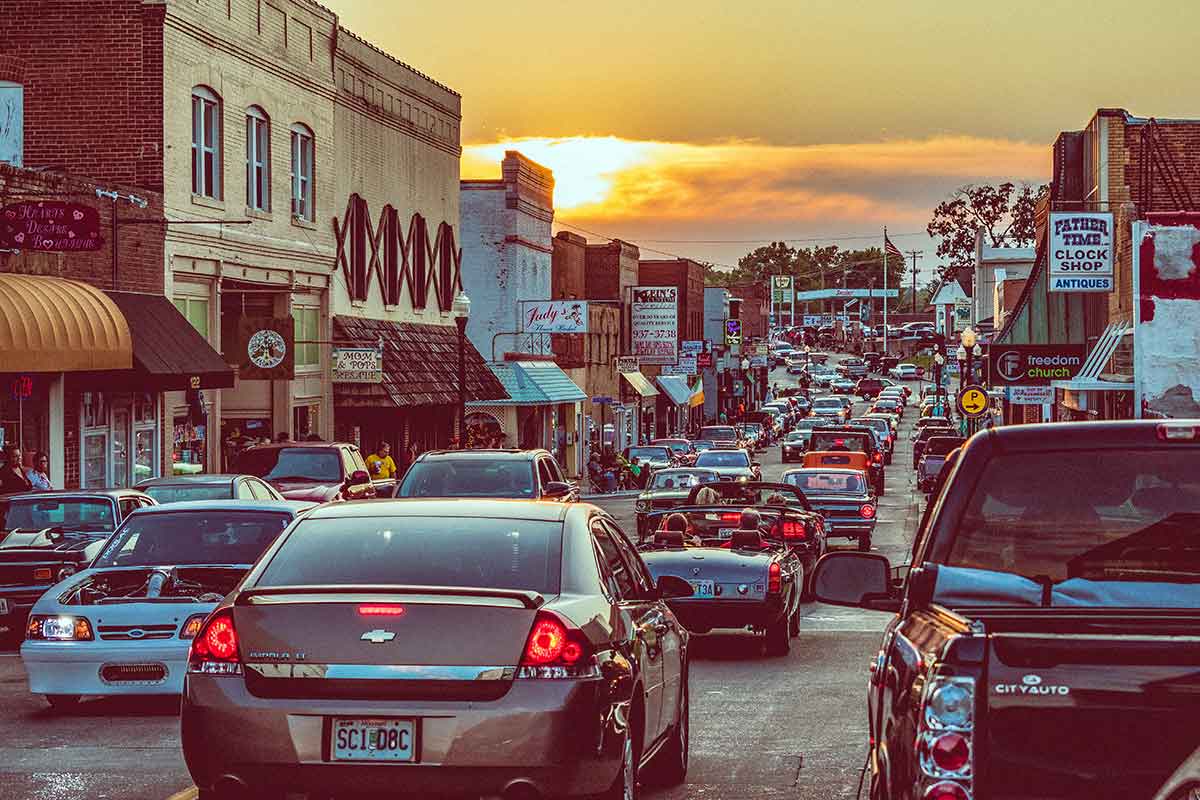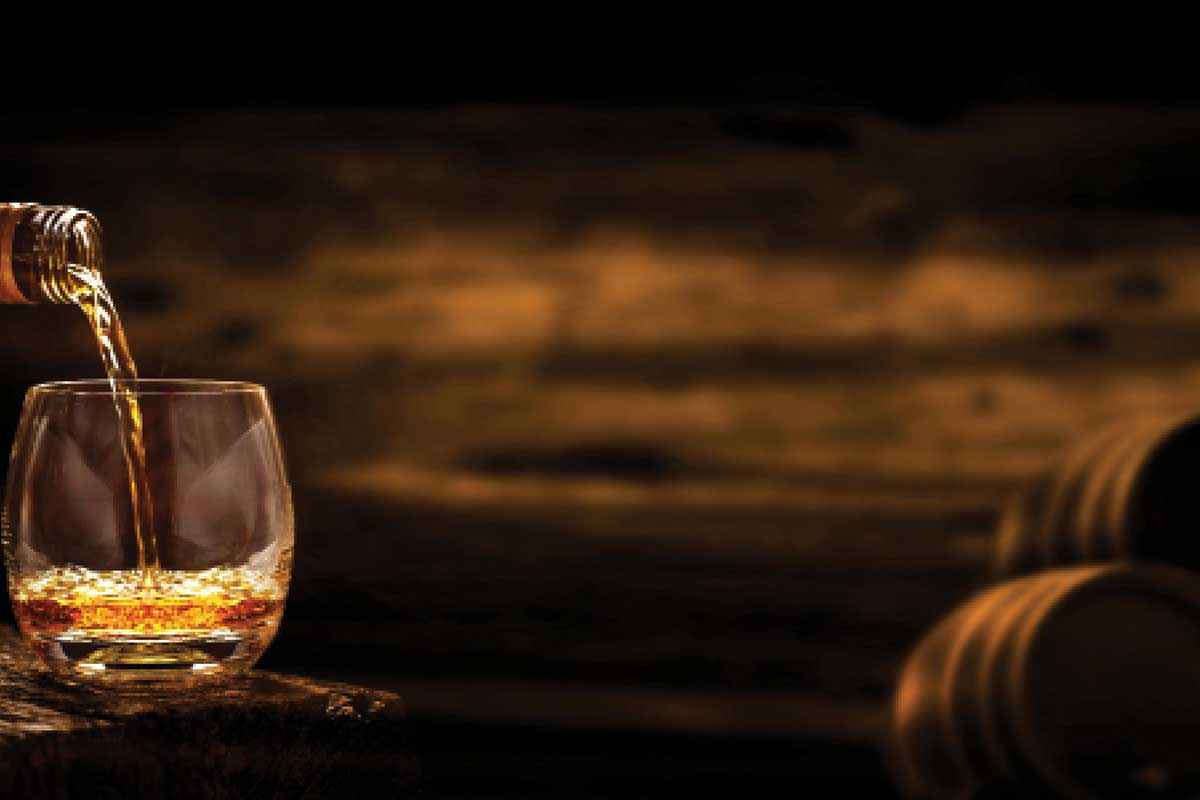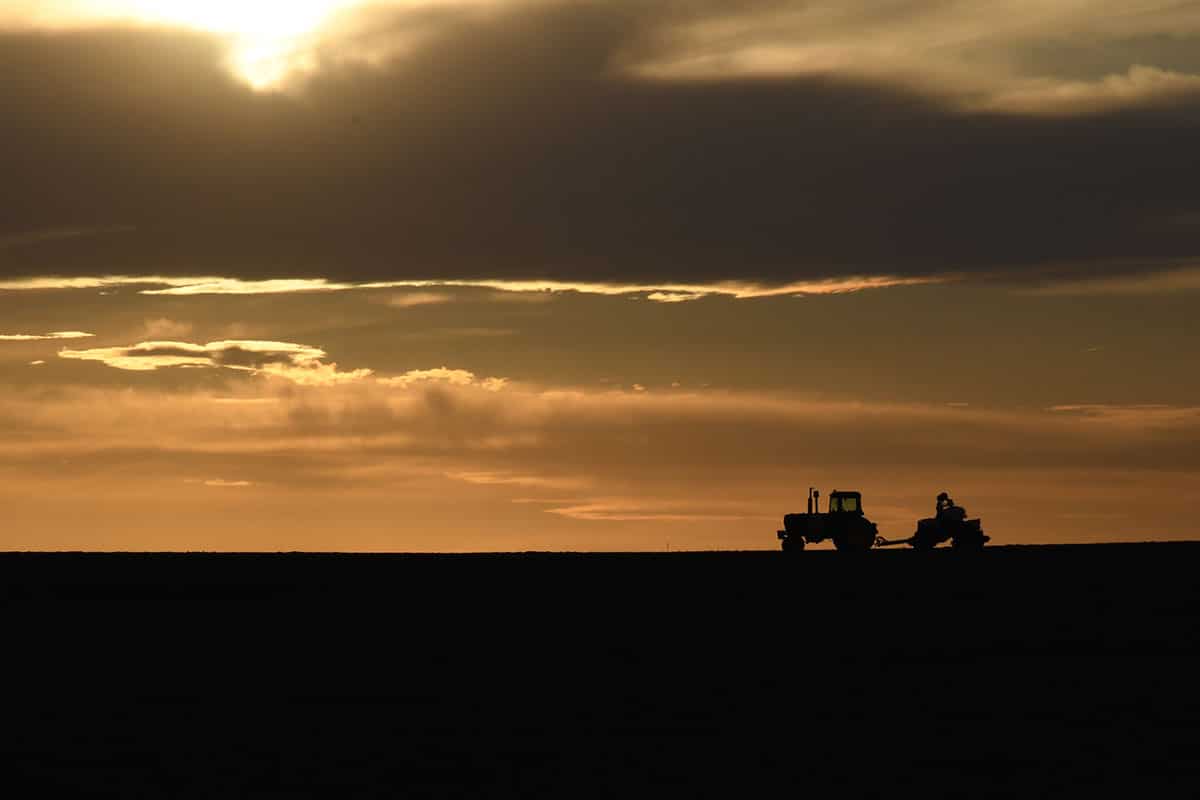This article was originally published in our November 1, 2020 edition.
Humans have been casting our own likenesses with stone and metal for tens of thousands of years. Part work of art and part historic interpretive exhibit, statues can tell us about the figures who have influenced our past. Statues may also hold a clue to understanding the communities that put them up and take them down. This is a moment fraught with consideration of statues. There is discourse about the removal of old statues and the erection of new ones. While we are considering the statues that are on display around us, we are also considering the meaning of them. Does a statue inherently denote a celebratory feeling toward the figure it represents? Can a statue represent a historical figure in a neutral light? While the public grapples with these questions, here is a smattering of Show-Me State statues. Some are old, some are new, some represent real figures while others are fictional or anonymous. Some represent people venerated as heroes, and others depict people whose legacies are murkier.
Apotheosis of St. Louis, St. Louis
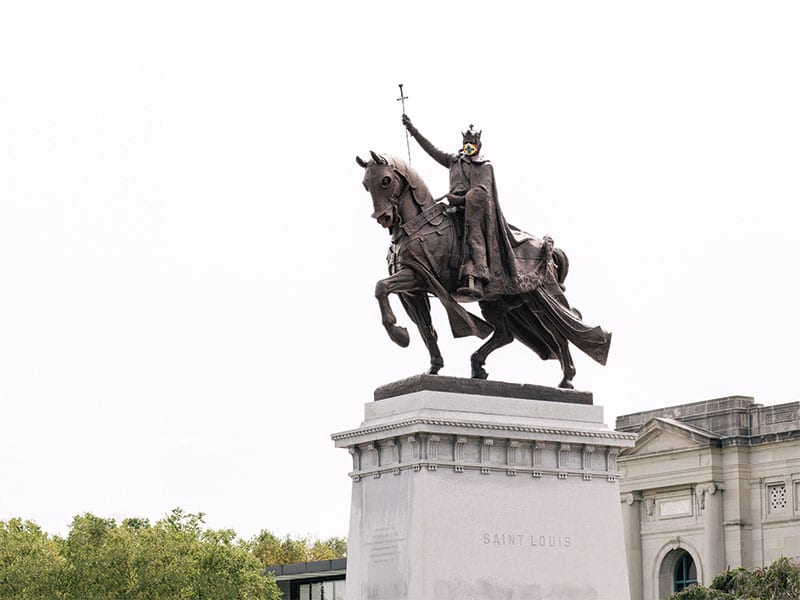
The statue of King Louis IX of France just outside the St. Louis Art Museum is an image immediately brought to mind by the mention of Forest Park. In fact, until the Gateway Arch was built, this statue was considered the symbol of the city. Depicting the man the city of St. Louis was named for, the statue was first erected for the 1904 World’s Fair. It became a popular landmark and in 1906 a permanent version of the statue was gifted to the city by the World’s Fair organizers. Louis IX is a saint of the Catholic Church, but his legacy as a leader of crusades into northern Africa has recently inspired activist groups to call for the statue’s removal. Here, he’s wearing a mask as a reminder to St. Louis citizens to take safety precautions during the COVID-19 pandemic.
Pony Express Monument, St. Joseph
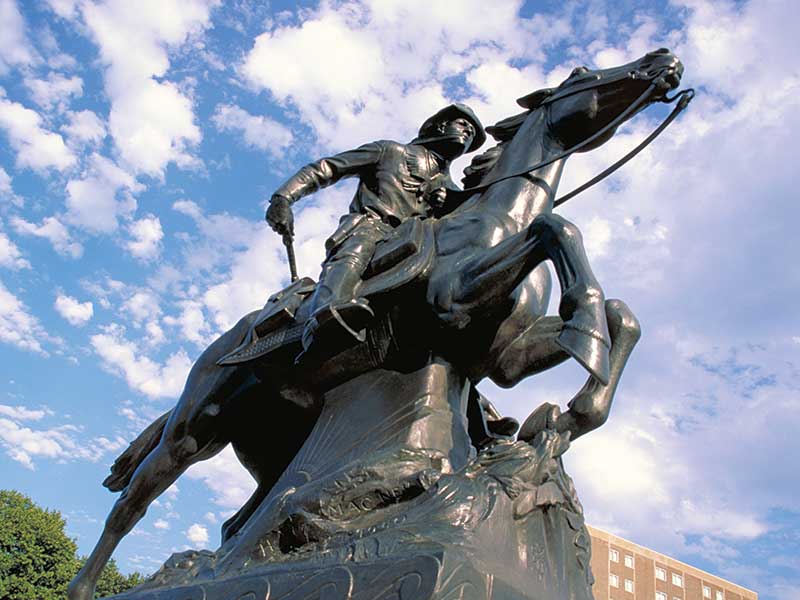
The only statue on our list that doesn’t represent a specific figure, the Pony Express Monument in St. Joseph was dedicated on April 20, 1940, to commemorate the eightieth anniversary of the Pony Express. Although it only operated for about a year and a half, the Pony Express delivered more than 35,000 letters between St. Joseph and San Francisco, and it left an indelible mark on the American imagination, especially where the Wild West is concerned. Failure to win a mail contract, the Civil War, and the arrival of transcontinental telegraph lines conspired to end the storied mail service, but its memory has endured more than 150 years.
James Ivers, Cape Girardeau
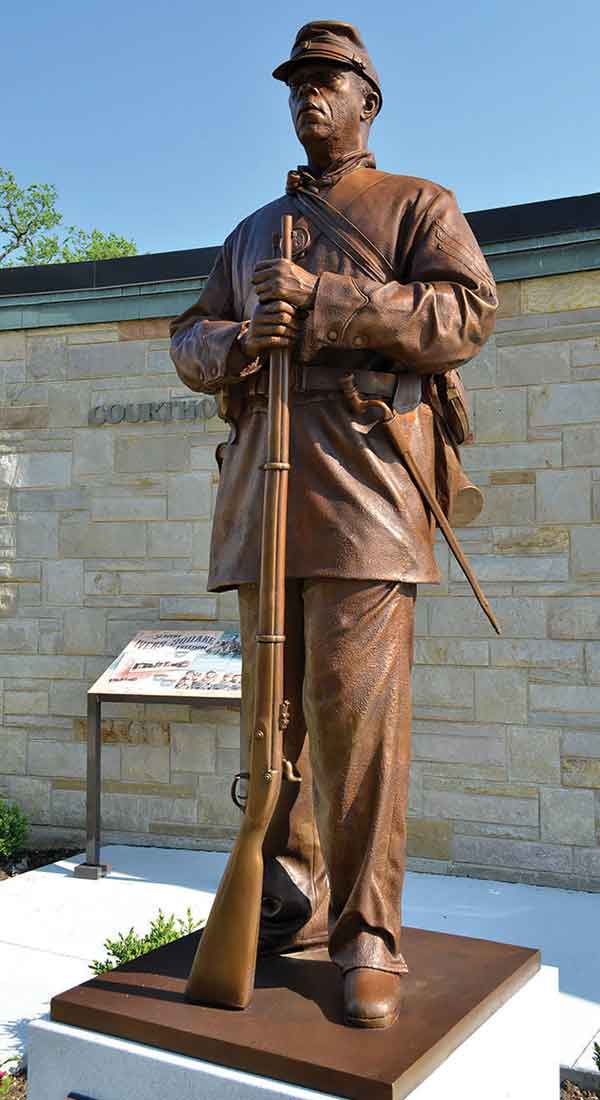
Ivers Square outside of the Common Pleas Courthouse in Cape Girardeau gained a statue of its namesake in the summer of 2019. James Ivers was a former slave who enlisted to fight for the Union inside the courthouse just a stone’s throw from where his statue now stands. He passed away in 1863 due to an illness. The statue of Ivers not only acknowledges the man’s ties to the area, but also the fact that this same ground was once a place where slaves were bought and sold.
Ceres, Jefferson City
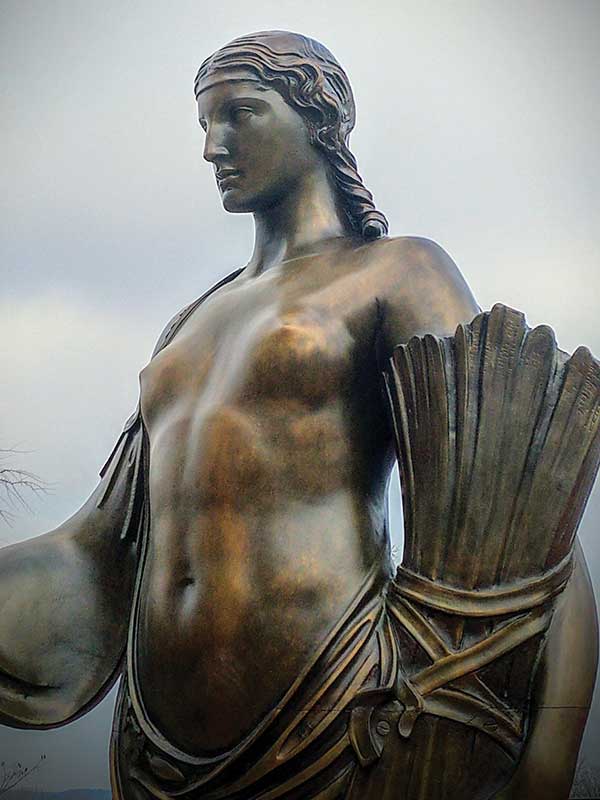
Ceres was first installed atop the Capitol building on October 29, 1924. The 1,500 pound statue was created by famed sculptor Sherry Edmundson Fry. Ceres comes from Roman mythology; she was the goddess of agriculture and motherly love in the Roman pantheon. On the Capitol building, Ceres represents the state’s agriculture industry. After a long time on top of the dome, Ceres was removed for repairs in 2018. Before she was put back up, a petition with fewer than one thousand signatures circulated calling for the statue to be left off the Capitol rotunda. Missouri lawmaker Mike Moon also penned a letter to Governor Mike Parson asking that the statue not be put back up because it represented “a pagan god.” Little came of these protestations, and Ceres once again resumed her place on the Capitol building in December 2019.
Hannah Cole, Boonville

At the turn of the nineteenth century a handful of settlers of European descent were relocating to what is now Boonville. Hannah Cole was among them. After her husband was killed, Hannah and her nine children remained in the area, which would have been considered the frontier’s edge at the time. Eventually a fort was built up around the site of her home, and the city of Boonville grew out of it. Aside from being one of the town’s first residents, Hannah operated a ferry on the Missouri River beginning in 1816. In 2004, the statue of Hannah Cole was unveiled during the seventieth reunion of the Cole family. The statue is the centerpiece of Morgan Street Park in Boonville, which also features busts of some of the town’s major figures. Missouri’s legislature passed a resolution applauding the dedication of the statue the year it was unveiled.
Joseph O. Shelby, Waverly
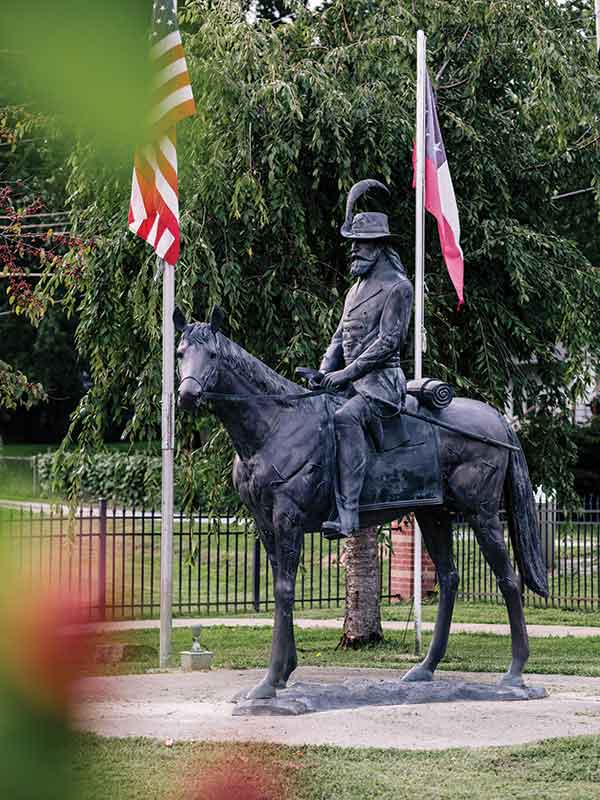
A statue of Joseph O. Shelby was erected in the small town of Waverly in June 2009. Shelby was arguably the most distinguished and successful officer of Sterling Price’s Missouri Guard, the Southern force that was active throughout the Show-Me State and Arkansas during the Civil War. Shelby was born into a wealthy family in Lexington, Kentucky, and relocated to Waverly after attending an elite private university there. In Waverly, he ran a steamboat business in addition to a hemp plantation, a ropeworks, and a sawmill. He was engaged in the border conflict and took up a cavalry command after the outbreak of the Civil War, capturing several towns during Sterling Price’s Missouri Expedition. Rather than surrender after the war, he struck out for Mexico where he was given land by Emperor Maximilian I, but he returned in 1867 after the emperor’s execution. The statue was unveiled on a hot June day in a ceremony attended by descendants of Shelby himself, the mayor of Waverly at the time Barbara Schreiman, and the late Ike Skelton, who represented Waverly during his career as congressman.
George Washington Carver, Diamond
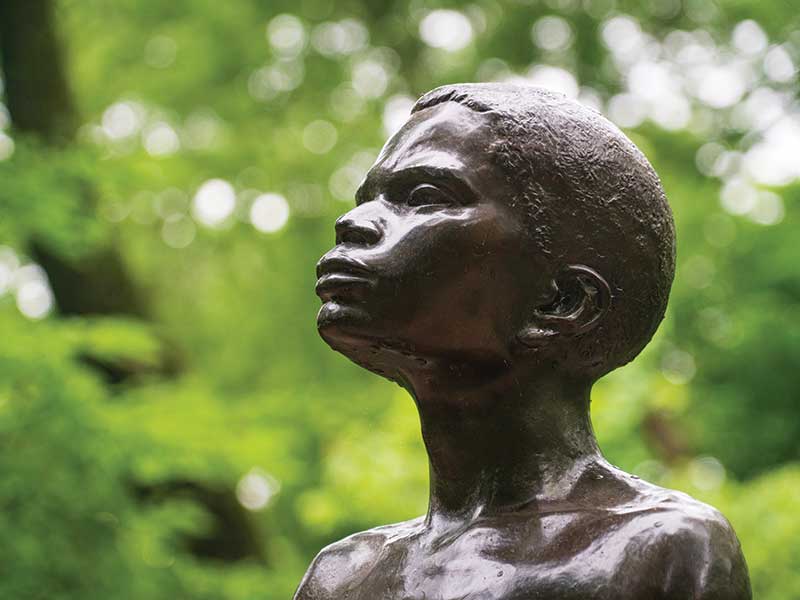
Although many people recognize the name George Washington Carver, his birthplace near Diamond might be considered a hidden gem. George was born into slavery on an unknown date. Moses Carver had been the man who kept George as a slave, but after the Thirteenth Amendment made slavery illegal, he and his wife raised George as a son. George was not allowed to attend the school in Diamond because he was black, so instead he walked eight miles to Neosho where there was a school for Black children. There he met Mariah Watkins, a former slave who allowed George to board with her while he attended school. George went on to become a prominent American scientist, especially known for developing methods to prevent soil depletion and promoting growth of sweet potatoes and peanuts as staple crops for poor farmers. Franklin Delano Roosevelt established George Washington Carver National Monument in 1943—the same year George passed away—making it the first national monument dedicated to a Black American and also the first not dedicated to a president.
Tom Sawyer and Huckleberry Finn, Hannibal
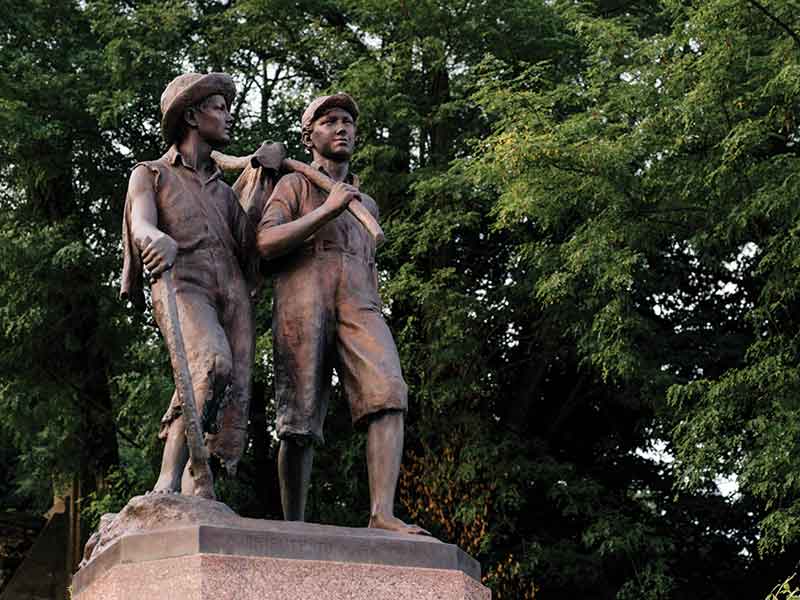
A pair of famous Mark Twain protagonists are depicted by this statue in Hannibal, appearing to set out together on another adventure. The statue was erected in 1926 and sits at the foot of Cardiff Hill. Tom Sawyer and Huckleberry Finn were from the fictional town of St. Petersburg, Missouri, which Mark Twain based on his experiences growing up in Hannibal. They are the only figures in this essay that are derived from fiction.
Photos // Ken Steinhoff, Holly Kite, Dana Rademan Miller, Missouri House of Representatives
Related Posts
Revitalizing Missouri Downtowns
Here’s how Missourians are working together to revitalize downtowns across the state.
This is Our Missouri
A photo project helps commemorate the bicentennial.

